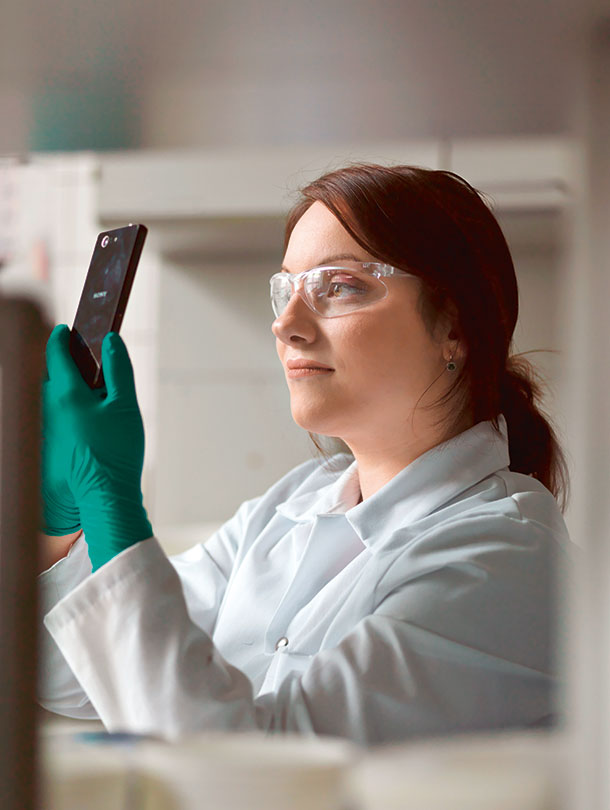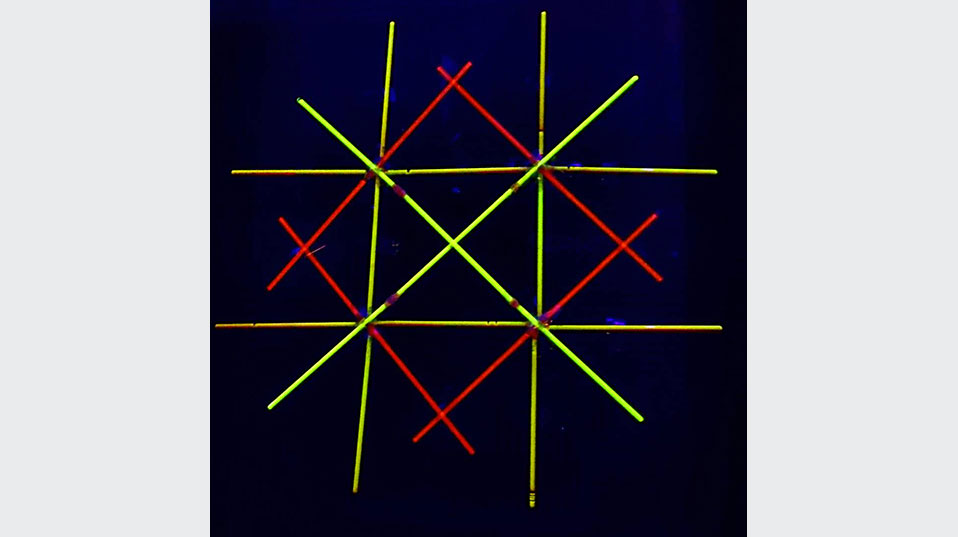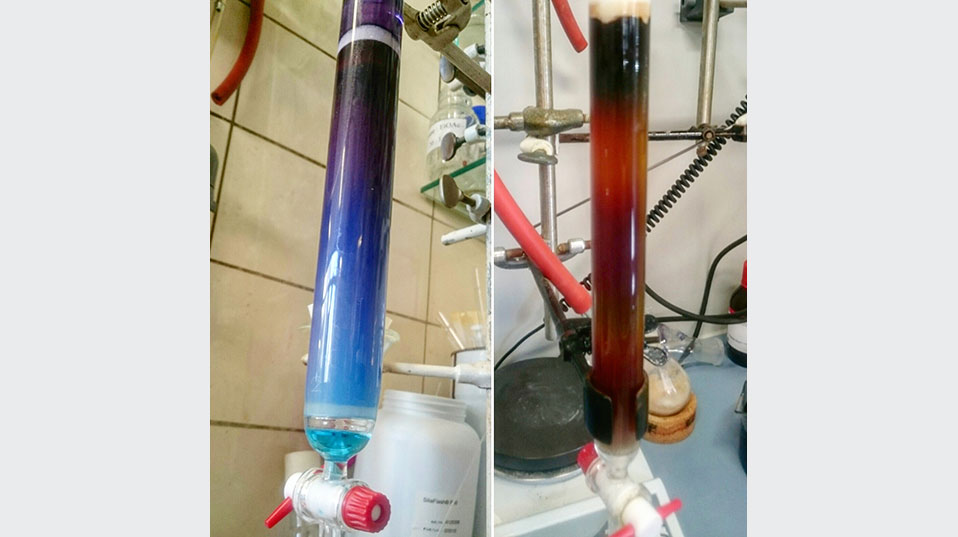Likes for the lab
Text: Olivia Poisson
Doing a doctorate can be a lonely business. Not so for Martina Hestericová, a chemist with a passion for making science more accessible on social media.
Martina Hestericová has turned scientific research into a spectator sport, with daily posts from the lab that have made the young Slovakia-born scientist something of a social media star in her field. However, anyone looking for selfies and self-promotion will be disappointed: the goal of Hestericová’s posts is to fuel interest in the natural sciences. And it’s working – her Instagram channel has almost 10,000 followers and counting.
Family website
Hestericová’s enthusiasm for science seems to run in the family. When her grandfather retired after 40 years spent teaching mathematics and physics, her father set up a website to keep him busy. The site became an online repository for the former teacher’s vast collection of math and physics exercises and explanations, intended as a resource for students.
Since her grandfather’s passing, Hestericová has taken over, adding chemistry to the list of featured subjects. Today, «priklady.eu» is a hugely popular online portal in Slovakia and the Czech Republic with around 5 million visitors a year. Since Hestericová’s sister began translating the texts from Slovak into English, users from as far away as the US or India have also started using the portal. «I’m currently trying to persuade my husband to contribute with an organic chemistry section, but with no luck so far», says Hestericová, who is married to another doctoral student at the University of Basel’s chemistry department.
Hestericová did not stop there, however. Around two years ago, seeking to promote the site to an even wider audience using social media, she began experimenting with various channels. «At first I didn’t have a clue what I was doing, and kept having to look up terms like hashtag», she recalls. Still, she learnt quickly, and now posts photos and short videos from her chemistry lab every day. She has enjoyed the greatest success on Instagram, under the handle @priklady.eu.
The beauty of science
What started out as a way of promoting the website has evolved into a project of its own. While the website is designed to help students with homework or exam preparation, Hestericová uses Instagram for another purpose: «I see Instagram as an autonomous channel for science communication. As a researcher, I can use it to communicate directly with young people I would never reach using other channels.»
More than any other social media platform, Instagram relies on images – beautiful ones, to be precise. There is no shortage of inspiring subjects in Hestericová’s lab: steaming chemical apparatus, sparkling laboratory glassware or fluorescent liquids – her photos showcase chemistry’s aesthetic side. At the same time, Hestericová is well aware of the importance of finding the right balance between eye-catching images and factual information, explaining the content of her photos and videos in comprehensive captions. Of course, she makes sure never to forget the two most important ingredients of social media success: humanity and humor.
Stories from the lab
In keeping with social media tradition, interaction with the community is another key aspect of Hestericová’s Instagram presence. In the comments section, users often ask for advice about what subjects to study or information about the doctoral process and lab work. Whenever she can, she tries to provide direct help, or refers the question to a colleague. «If we want to inspire more young people to study scientific subjects, social media is the place to do it – this is where the target audience is to be found and where we can get through to them», she explains.
Although Hestericová uses her online presence to communicate with the public in an individual capacity, she has become something of an ambassador for the University of Basel, and a role model for women in research in general: «Helping more women to have the confidence to pursue a career in chemistry is something I both enjoy and believe in. She is by no means alone in her mission; social media abounds with female researchers posting about their work under hashtags like #WomenInScience or #WomenInStem in a bid to attract other young women to the field.
A passion for sharing
In science communication, Hestericová believes she has found her true calling. «I would like to turn my hobby into a career. My dream job after finishing my PhD is to work in science communication», she says. It all began with the website a few years ago, but her teaching duties as a doctoral candidate and work with students also helped convince her that conveying knowledge to others is what she enjoys the most.
However, the real turning point came last year, during a workshop held as part of the Antelope career program, aimed specifically at female doctoral students and postdocs at the University of Basel. «We were told to think about what sets us apart from other PhD students. That was when I realized how much I enjoy explaining science to other people», she says.
Hestericová’s passion is not limited to the virtual world; she also regularly writes articles for the science page of a Slovak daily newspaper «The Daily N», and represents her department at events such as the Long Night of Science, Kids@ Science or the Festival of Molecules, where she invariably fascinates children and adults alike with chemistry experiments. «I just think it’s great when I get people excited about science – I’m always amazed at how many people take an interest.»
Martina Hestericová was born in 1990 in Slovakia and studied biochemistry and bioorganic chemistry at the Comenius University in Bratislava. Since September 2013, she has been a doctoral student in the research group led by Professor Thomas Ward in the University of Basel’s Chemistry Department, where she conducts research on the development and optimization of artificial metalloenzymes.
Martina Hestericová also writes for Sci Five, the University of Basel’s English-language Blog.
More articles in the current issue of UNI NOVA.






